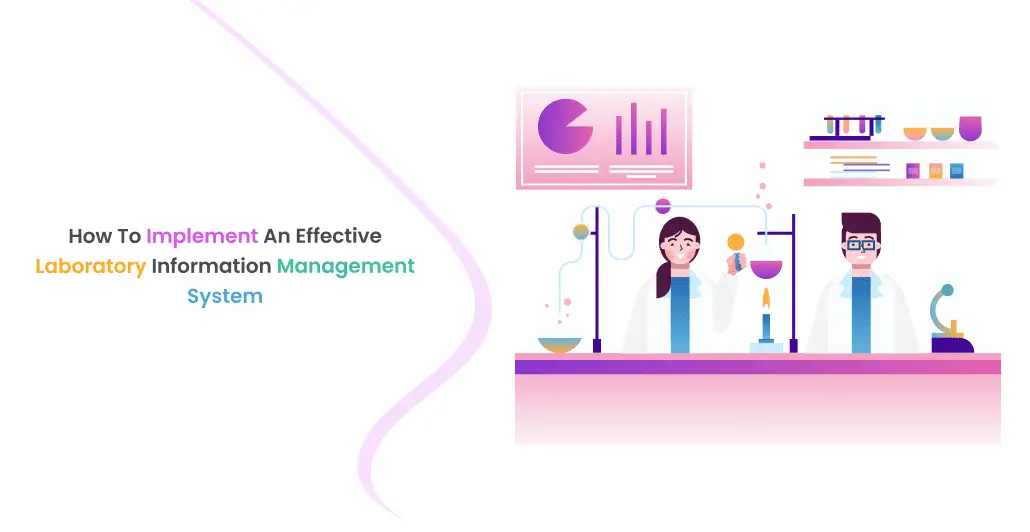How to Implement an Effective Laboratory Information Management System

LIMS is crucial in improving lab efficiency, accuracy, and productivity while minimizing associated risks. In general, there are no industries that are untouched by the LIMS where the right design can lead to efficient workflow and better data regulation even in the field of healthcare. As a reader of this article, you will learn about how to successfully put in place LIMS and learn of the advantages that come with Laboratory Information Management System, consideration in different sectors, especially pharmacy and healthcare.
Contents
Understanding LIMS
A Laboratory Information Management System (LIMS) is an application needed to help organize and optimize the working processes in a laboratory. It assists in inoculation, sample tracking, supplies, and stock, and more importantly in meeting the plan and requirements set by the key regulatory authorities. LIMS centralizes an organization’s laboratory operations, making it convenient to handle data and procedures in the course of work.
Benefits of Laboratory Information Management System
- Improved Data Management: LIMS is essential since it can hold all laboratory data in one place. This way, the data is never entered in both places once, it is safer from accidental alteration or deletion, and it is easier to get the data off the database.
- Enhanced Efficiency: Some of the functions that are performed by LIMS include sample tracking, entry of data, and report generation which will require a lot of time and workforce when done manually hence freeing up time for critical functions.
- Regulatory Compliance: LIMS enhances the laboratories to manage the records and ensures they meet the imposed requirements of the industry.
- Better Quality Control: In essence, with LIMS, laboratories are in a position to set up a Quality Assurance program, monitor compliance and/or deviations from these standards, and guarantee that implementation of processes and procedures is in compliance with set specifications.
- Cost Savings: The use of LIMS minimizes expensive mistakes and enhances lab procedures and, therefore, can translate into huge savings.
Steps to Implement an Effective LIMS

1. Define Your Requirements
Only after the identification of your laboratory’s requirements can the implementation of LIMS begin. This also involves the awareness of your actual or current requirement in your laboratory, for instance, the kind of samples that you are likely to deal with, the amount of generated data, and even the kind of regulatory norms you need to obey. However, various needs should be determined through consultation that involves laboratory staff, IT professionals, and management.
2. Choose the Right LIMS
Thus, after specifying the requirements, the best way is to choose the proper LIMS matching the requirements. LIMS solutions abound in the market today and are characterized by sundry attributes. Some of the key issues that should be taken into consideration include scalability, usefulness, compatibility, and vendor services respectively. It might also be useful to ask for the demos or the trial versions of the different systems to see if they can be used in the laboratory.
3. Plan the Implementation
The next procedure is to customize the LIMS to suit your laboratory after choosing the system you intend to use. This comprises the creation of accounts for the users, determination of functional paths, creation of fields for data storage, and connections with other systems. Mainly, co-operate with the LIMS vendor so that the system can be set up properly and if any sort of customization is required, then it should be done finely.
4. Configure the System
Training is always an indispensable element that should be taken into consideration during relevant implementation. Make sure that all employees of the laboratories are trained well and are aware of how the new system works. This should cover the basic training before practicing and the follow-up training to address specific concerns that employees may have. Timely training makes the staff feel at ease with the system that they are using and the ability to operate it fully.
5. Train Your Staff
Education is an essential factor in any strategy for LIMS implementation. Make sure that all the employees in the laboratory undergo proper technocratic training on how to operate with the new system. This should entail the first education session followed by restorative training in case of any complications or queries. It means that officials will be able to effectively utilize the system due to the high level of comfort being provided by intensified training of human resources.
6. Conduct Testing
It is recommended that before a full implementation of the LIMS has been made, and the system has many users, one has to run some tests so that a confirmation can be made whether the system is running as it was designed or not. This includes testing all the business functions, which include all the process flows, data entry points, reports, and interfaces. Address all problems that are faced during the testing phase so that one does not encounter them once the system is up and running.
7. Go Live
After the testing process and fixing of all the existing problems, it is high time to go live with the new LIMS. Care should be taken when planning the go-live to avoid major complications in the laboratory. Closely monitor the process during the initial period to quickly respond to the problems that might occur in this process.
8. Monitor and Optimize
Thus, after launching the LIMS, its work, and its use should be evaluated regularly and if necessary, feedback from working employees should be considered. Take this as a guide when reviewing for weaknesses and strengths, and make adjust as necessary to improve the system. Conduct periodic LIMS audits of the various areas of the LIMS including the workflows, and data fields, and render the configurations effective in the operations of the laboratory.
LIMS in Pharmacy
In the context of the pharmaceutical industry in particular, a LIMS has many functions for the management of operation within a laboratory and for conformity to governmental and other legislative measures. Pharmaceutical laboratories deal in large amounts of data regarding samples that have been taken, results of tests that have been conducted, and quality control data, among other things. The data is effectively managed by a LIMS since all the data related to samples, testing, and results are stored and can be retrieved easily.
Pharmaceutical laboratories addressing these issues have to meet legal stipulations that are advanced through the FDA and other similar organizations. Labs are also able to maintain compliance through record keeping with the help of a LIMS where audit trails and electronic signatures can be made. This curtails the probability of failure to meet the laid down standards and hence the penalties pale heavily on the laboratories.
LIMS Play in Healthcare
In healthcare, LIMS is implemented in different sorts of laboratory, which includes clinical, diagnostic, and pathology. LIMS called Pathology Lab Software assists in dealing with the pathology lab’s multifaceted processes and data. This entails sample acquisition, documentation, analysis, handling of results, and reporting as per the laid down standards.
In healthcare, a LIMS assists in the enhancement of patient care due to the efficiency of test results returned to the physicians. It also contains the integration with other healthcare systems like electronic health records (EHRs) that increases the data interchanging process and hence, enhances the overall healthcare environment. Through this integration, sources explain that medical error is limited besides increasing the efficiency and the quality of care.
Conclusion
Thus, the proper Laboratory Information Management System usage can involve many advantages for laboratories in multiple industries, such as pharmaceutical and healthcare. Thus, a LIMS can facilitate lab improvement owing to its ability to improve data management, increase efficiency, help with compliance with regulations, and contribute to quality assurance processes. By following the steps below this article, one will be in a good position to succeed when implementing the LIMS and perhaps get the maximum value of the investment.











